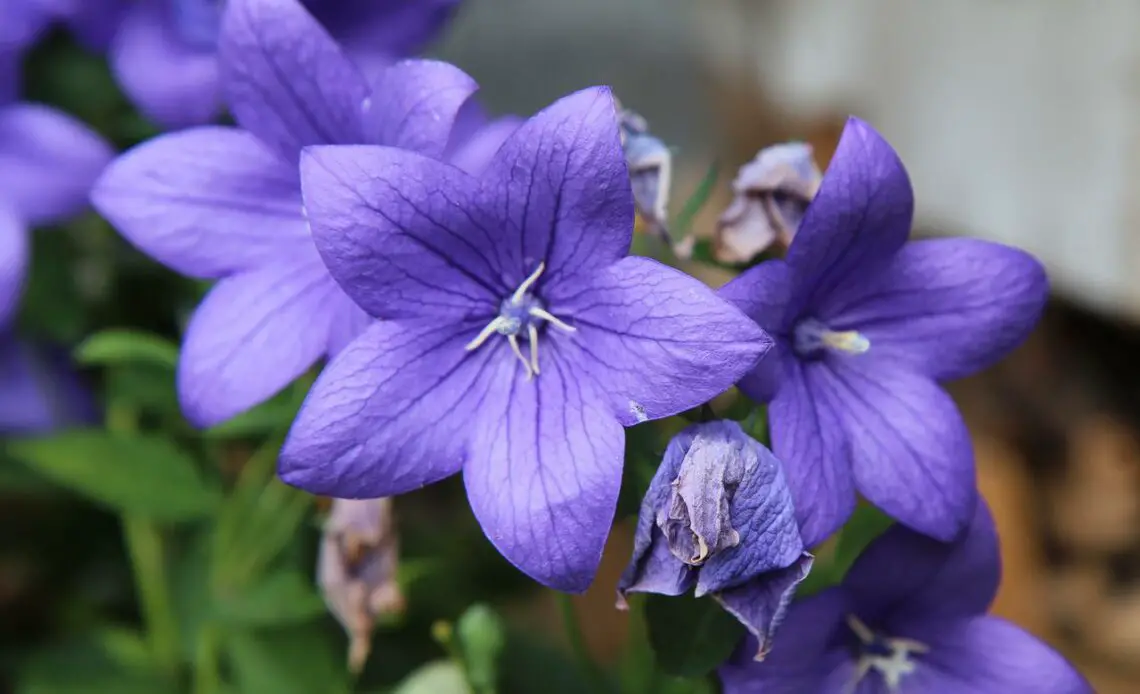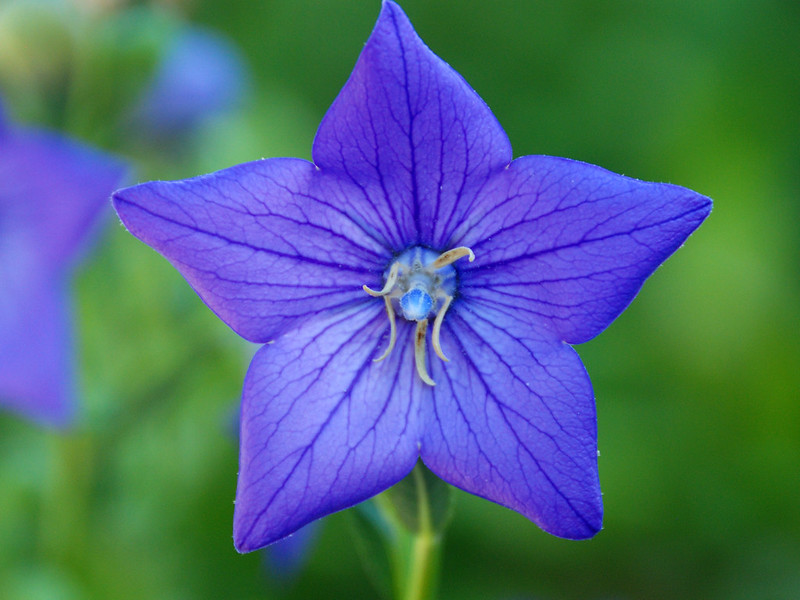
Last updated on May 20th, 2023 at 05:53 pm
Commonly known as the balloon flower, its scientific name is Platycodon Grandiflorus. It is a perennial plant and the only member belonging to the genus Platycodon of the family Campanulaceae. The Campanulaceae family has over 2400 species of herbaceous plants across 24 genera. The flower is also known as the Chinese Bellflower, Japanese Bellflower, or Platycodon.
The balloon flower gets its name because its bud swells like a balloon before bursting open in full bloom. The botanical name is derived from the Greek words “platys,” meaning broad, and “kodon,” meaning a bell, referring to the shape of the corolla.
The balloon flower is indigenous to East Asia. These flowers are native to China, Korea, Japan, and Eastern Siberia.
The balloon flower blooms in late summer, around July and August. It is suitable to grow in the USDA zones 3a to 9b. It does not survive in winter, recurring in late spring. The flower prefers light shade. It thrives in well-drained soil, preferably sandy or slightly acidic soil. It cannot tolerate drought.
The balloon flower is a herbaceous plant. With blue blossoms being the most common, varieties of purple, pink, and white balloon flowers are also found. The balloon flower is widely cultivated. Common cultivars are Fuji, Apoyama, and Mariesii.
What does the Balloon flower symbolize?
Mid-summer through autumn, the balloon flower covers the gardens and landscapes with beautiful blue blossoms. Different cultures have different balloon flower meanings and symbolism.
The balloon flower symbolized endless love, honesty, and obedience in the Victorian Era.
In Japan, the balloon flower is called kikyo, meaning pentagram. Its symbolism comes from its star-shaped flowers. The five points of the five petals symbolize the five elements of the Tao—wood, water, fire, earth, and air. This flower also symbolized magic and divination during medieval times.
In some regions of Europe, the balloon flower symbolizes the five senses. The Wiccans thought this flower to be imbued with divine and magical properties. The Balloon flower symbolizes the desire for a friend to return.
All in all, the balloon flowers symbolic meanings are:
- affection
- constancy
- everlasting love
- delicacy
- humility
Meaning of the Balloon flower colors
Blue color
The blue balloon flowers symbolize serenity and peace. They also symbolize intimacy, safety, and trust.

Purple color
In some cultures, the purple balloon flower symbolizes royalty and elegance.

White color
The color white is associated with calmness and purity. The white balloon flower symbolizes new beginnings, devotion, and innocence.

Pink color
The symbolism of the pink balloon flower varies from attachment to marital love, from companionship to friendship to gratitude.

Interesting facts about the Balloon flower
- European gardeners first came to know about the balloon flower in 1844. A Scottish botanist, Robert Fortune, came to know about this plant on his trip to eastern China.
- The balloon flowers have little to no fragrance.
- The balloon flower is not toxic.
- This plant makes great cut flowers in flower arrangements.
- The balloon flower is broadly used in traditional medicines. The flower has a naturally occurring compound, saponin, which has many medical benefits.
- In China, the balloon flower is used as a remedy for common colds, sore throat, chest congestion, and tonsillitis.
- China has a history of using the balloon flower in medicinal preparations dating back over 2000 years.
- In Japan, the balloon flower is one of the Seven Flowers of Autumn.
How to grow Balloon flowers
The balloon flower grows up to 24 inches (60.96 cm). The leaves are dark green, about 1.9 to 4.7 inches (5 to 12 cm) in length, with narrow ends and toothed edges. During autumn, the leaves turn clear gold. The roots are thick, and white juice oozes out of the stem when cut. The flower base is shaped like a bell, with the crown divided into five fused petals. The petals surround a star-like pistil. When in full bloom, the balloon flower resembles a star.
- Plants should be started inside in early spring if grown from seed. Their seeds are so hard-shelled that you must fracture them to facilitate sprouting, a process known as scarification.
- Place your seedlings in a bright position in the garden, whether you transplant them or buy starter plants from a nursery. They will thrive in partial shade, but most flowers will be produced if the plant receives eight or more hours of direct sunlight daily.
- Balloon flowers prefer well-drained, loamy, slightly acidic soil.
How to care for Balloon flowers
- To keep the plant blooming, deadhead the old blooms.
- Tall plants may need to be staked to prevent them from collapsing under the weight of their blossoms.
- Balloon flowers appreciate moderate temperatures ranging from 60 to 80 degrees Fahrenheit. Make sure they get afternoon shade if you reside in a warm climate.
- Balloon flowers can withstand moisture without succumbing to mildew or fungus.
- Once grown, balloon flowers will not require much water from you. They can withstand brief dry spells.
- Fertilize them before they bloom in the spring.
- Work compost into the soil around their roots in the fall to restore them after a growing season.
- Pinch back plants when they are around 6 inches tall to encourage stocky, sturdy growth.
Best time to gift Balloon flowers
The balloon flower’s meaning is associated with friendship. This flower makes a perfect gift for friends.
This flower can also be used in anniversary bouquets, symbolizing endless love and honesty.
The purple balloon flower can be gifted to convey admiration or congratulate successes.
The balloon flower is a favorite amongst home gardeners. It can be planted with other flowers such as sedum, helenium, daylily, and coreopsis.
Conclusion
Balloon flowers have long been recognized for their culinary and medical uses, ranging from soups and teas in Korea to traditional Chinese medicine; these beautiful plants provide sustenance and healing.
Balloon flowers are also rich in folklore significance. Their five-pointed star shape has been associated with the elements, the senses, magic, and divinity, as well as monarchy and dignity.
If you want to know and learn more about flowers, we at PansyMaiden can help you. Check out our fun, easy-to-read, and informative flower-related content that you will surely enjoy!
